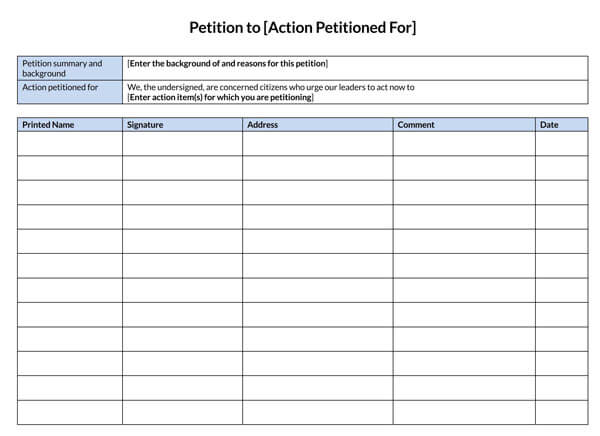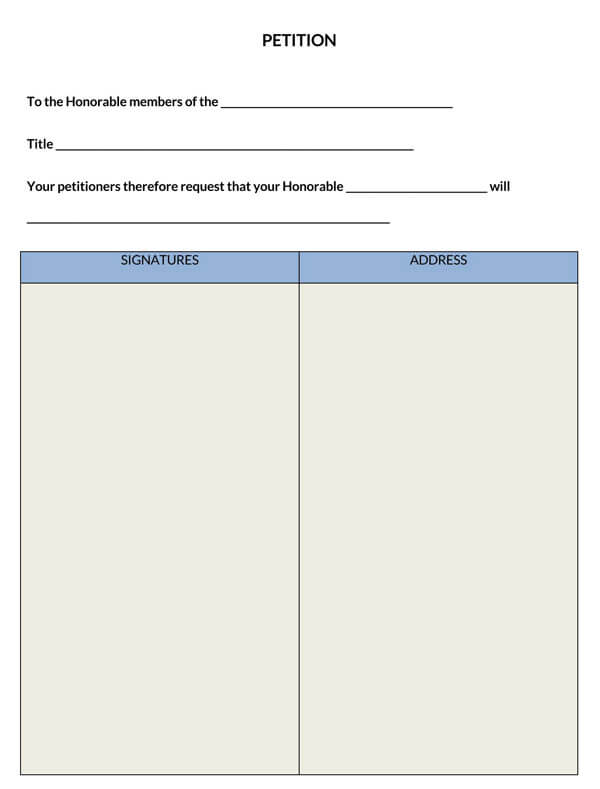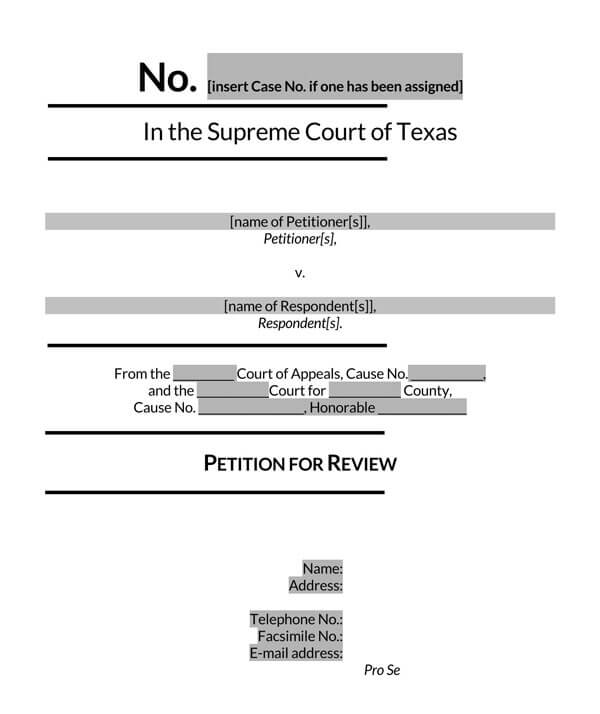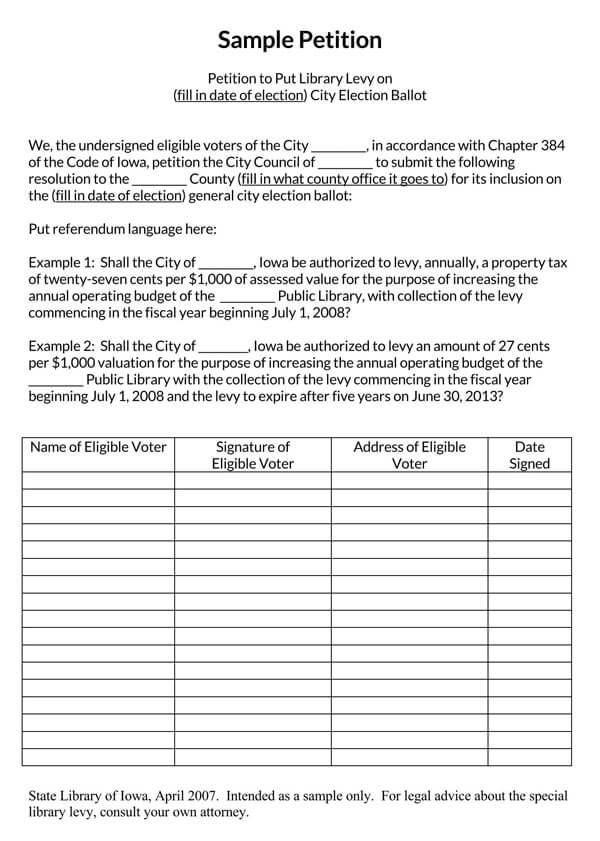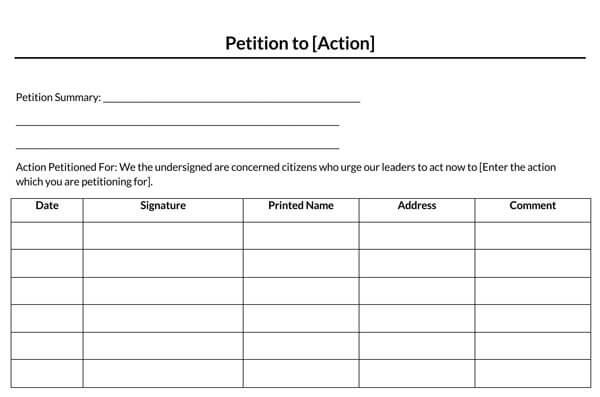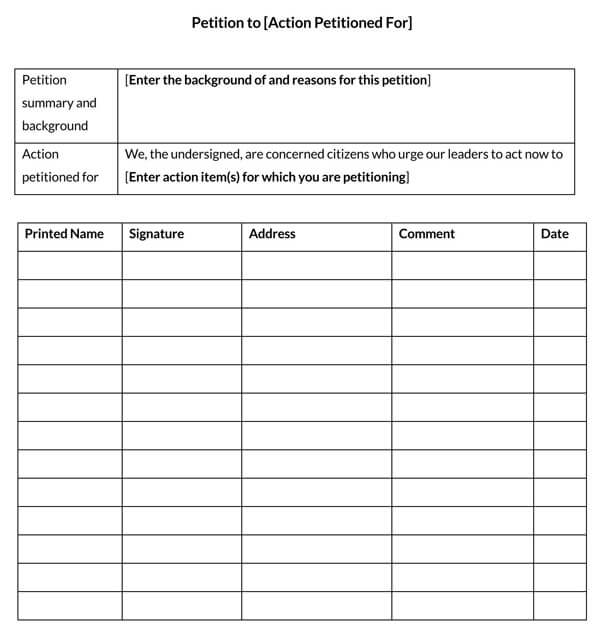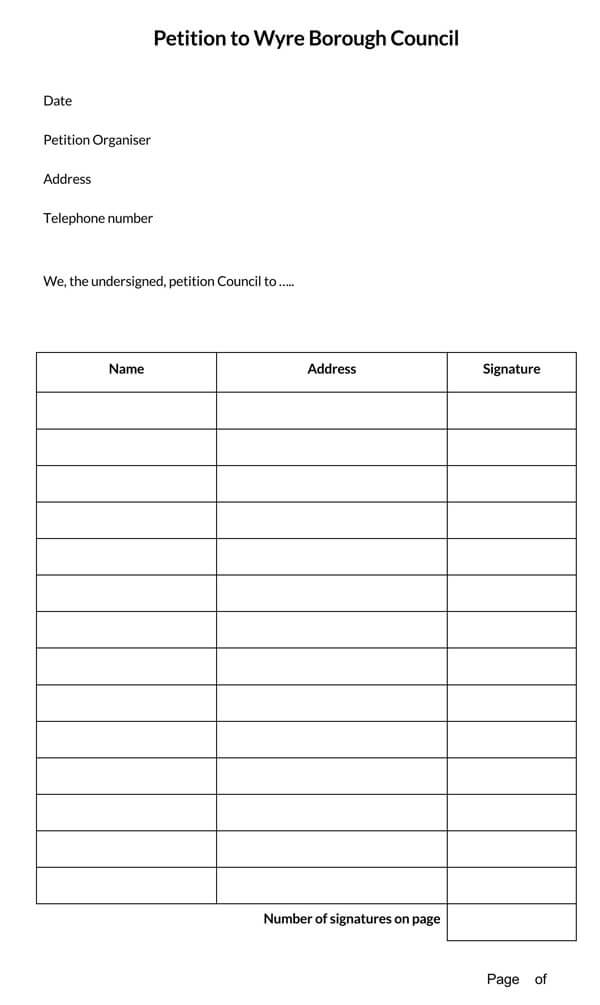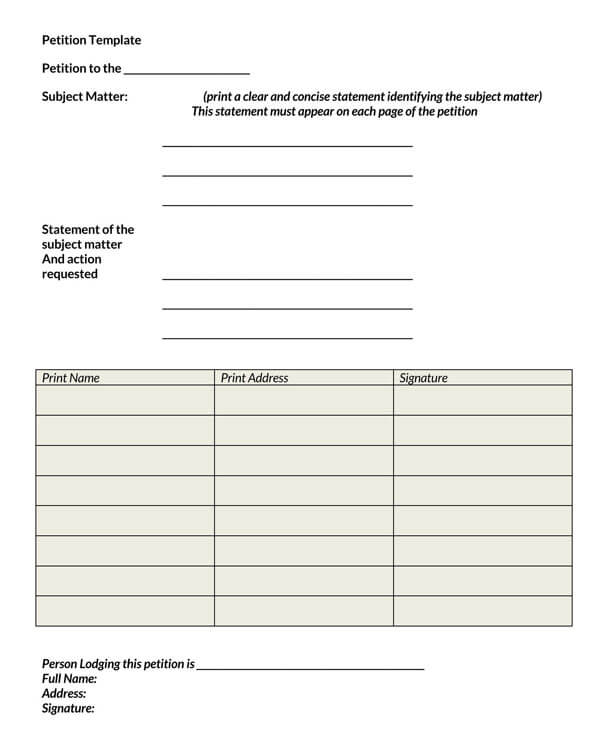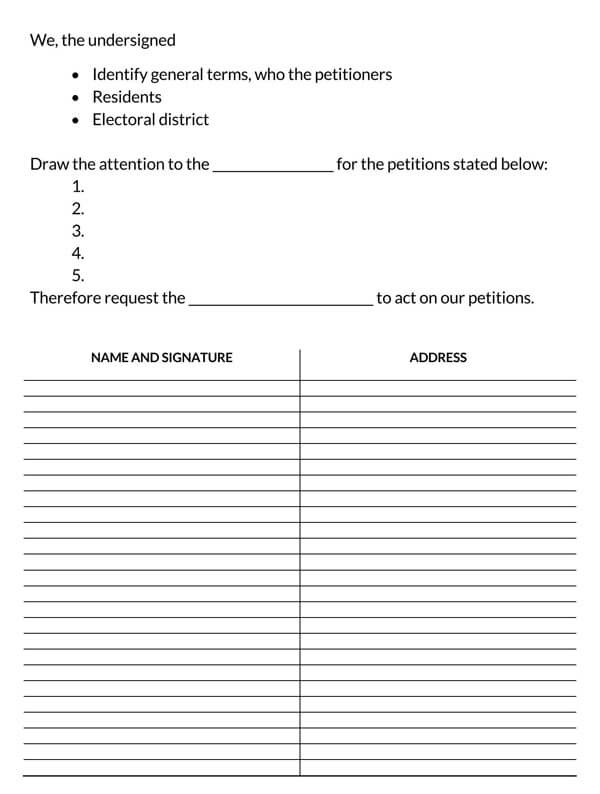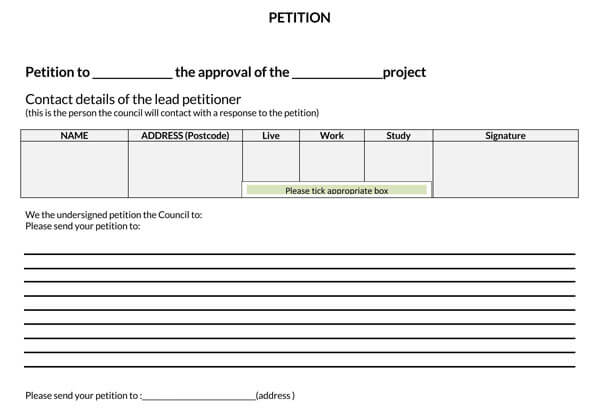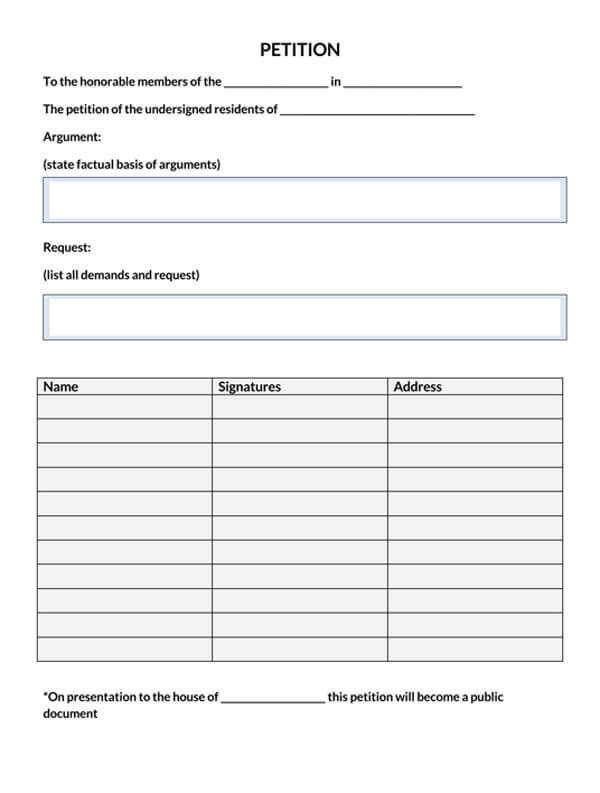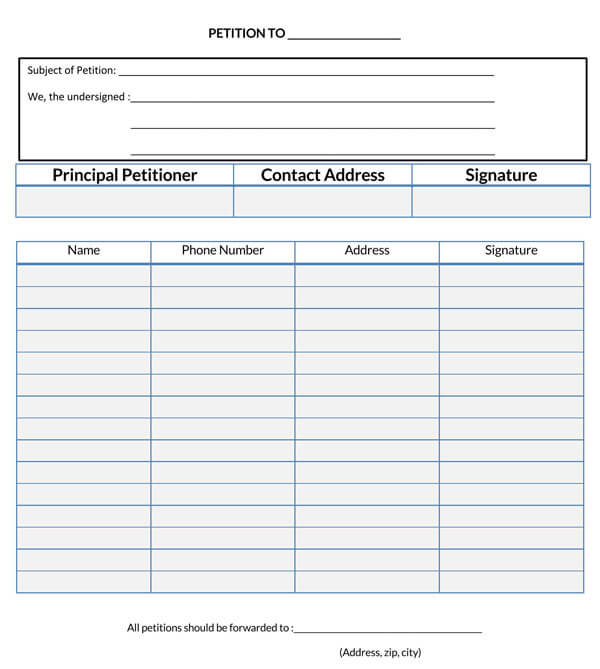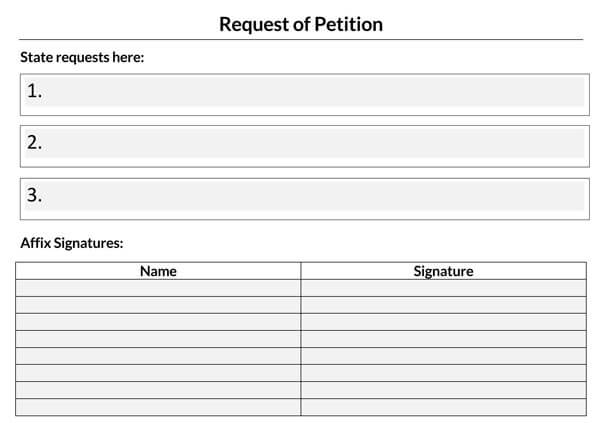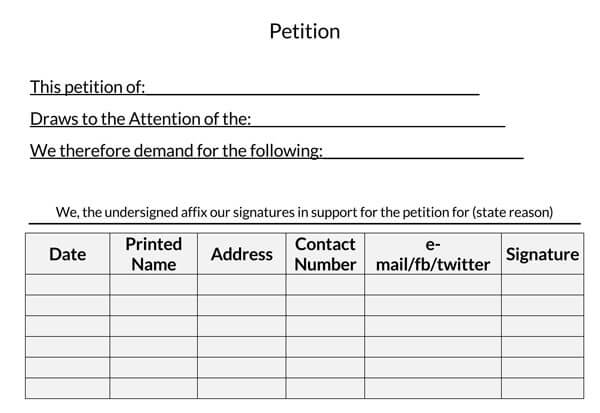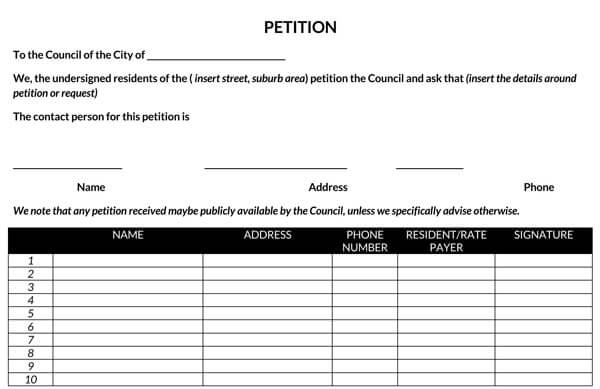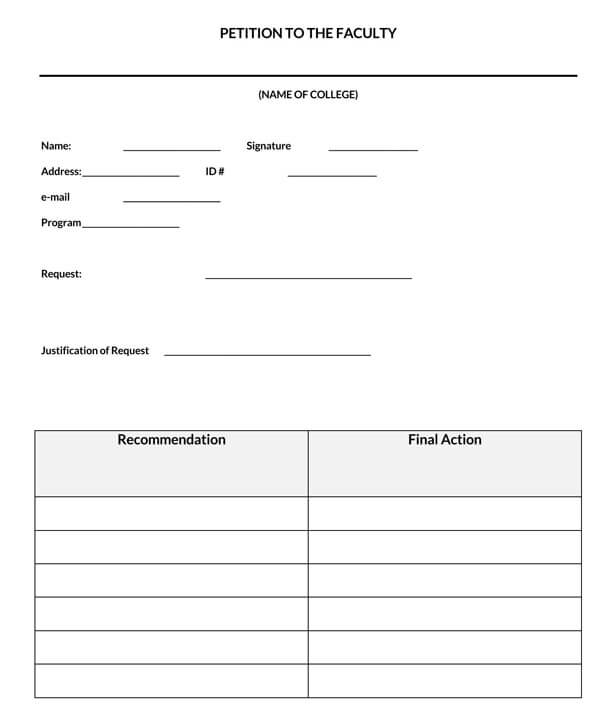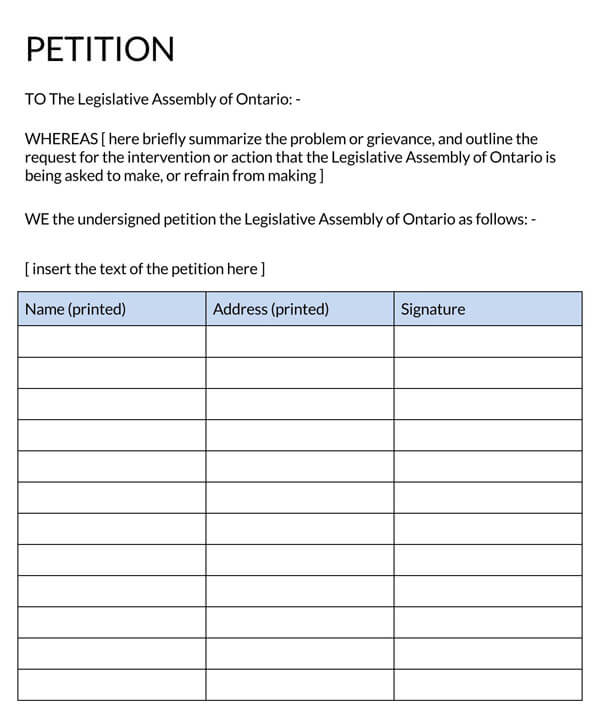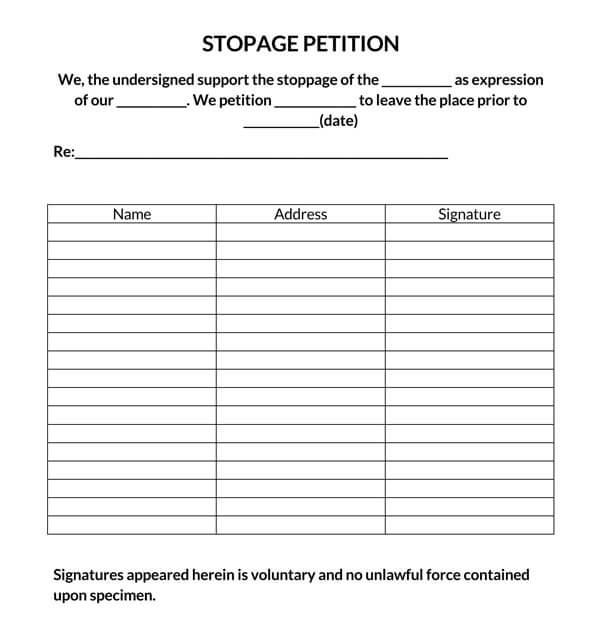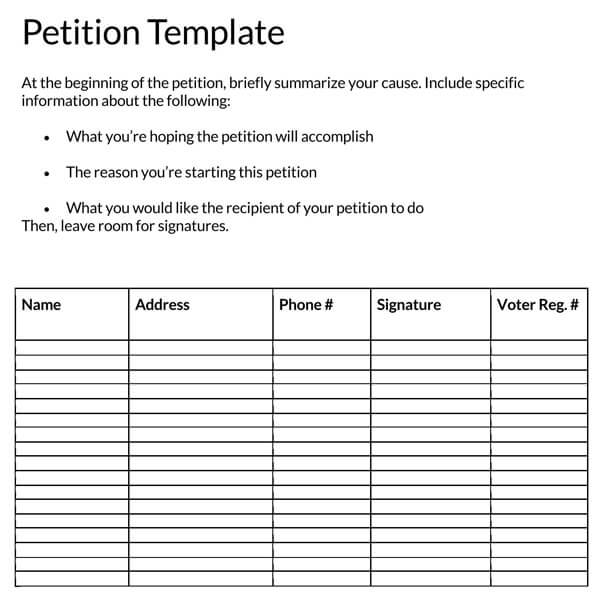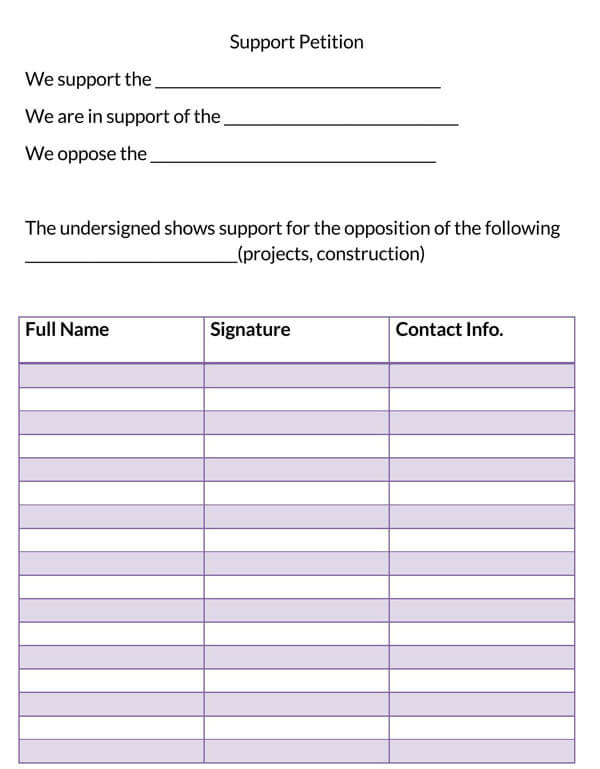A Petition can be described as a formal request, either on paper or online, which is usually created with a petition template and signed by many people who have chosen to come together to enforce a particular change to happen.
These people appeal to the responsible authority for their cause to be heard.
When several people come together, it increases pressure on the issue at hand and shows that people are demanding change.
Petition vs. press release vs. letter writing
There is a difference when it comes to a petition, press release, and letter writing, especially relating to what and how they communicate.
Here are some of the differences:
- A petition indicates that many people are for or against a particular issue while a press release provides details of an important issue to the public and letter writing communicates particular information depending on the sender.
- A petition targets direct audiences and may be less effective when it comes to reaching large audiences as compared to a press release which reaches a larger audience than that of a petition while letter writing targets smaller audience than a petition.
E-petition vs. paper petition
Holding a petition can be done either on paper or online. There is no particular difference between e-petition and paper petition. It just means that for e-petition, a petitioner gathers signatures online while for the paper petition, signatures are gathered on a printed petition template. Petitioners can campaign about their cause both through the internet (online) and on paper formats.
Free Petition Templates
When writing a petition, a petitioner must observe the step-by-step guide in order for them to craft an effective petition. However, there is also an easier way to create a proper signing petition and this is by using petition templates. With the help of petition templates, a petitioner can get clear guidelines of how best to create their petition. Also, with petition templates, one is sure to have a well-crafted, complete, and proper signing petition for their cause. These templates offer petitioners convenience as they focus on bringing change.
Following are some free downloadable petition templates for you:
Writing a Petition (Step-by-step Guide)
When preparing to write a petition, the idea is to have a well-organized petition template and a properly written petition that will result in a positive and real impact.
Here is a step-by-step guide on how to create a well-researched petition template and effective petition that will bring change to society:
Step 1: Target identification
The first step for any petitioner is to identify the target of the petition campaign. The target, in this case, is the people who should effect the change needed. Here are some of the targets: sport organizations, media organizations, governments and parliaments, political individuals and bodies, entertainment producers, educational institutions, and neighborhood authorities.
Step 2: Formulate the request
After determining the target that will be responsible for actualizing the petition, the second step is to prepare and formulate the request for the petition. The request must be an argument a petitioner can back up.
Research the topic
The petitioner must research the topic and find out more details about the request they want to make. The research will help a petitioner to gather more details and have an understanding of the topic. A petitioner is able to communicate clearly to others when the time comes for the signatures collection.
Verify the jurisdiction of the petition
For this; a petitioner will have to find out more about who will be responsible for implementing the petition. A petitioner requires information about whether it is a body, a committee, or a person.
For example:
If a petitioner wants a particular government policy to be changed, then they can target specific MPs to effect the change.
Ascertain the number of signatures needed
At this stage, the petitioner must find out the number of signatures needed for the petition to be considered. The number of signatures must be observed to show the need for change. While paper signatures are a common sight for most petitions, the e-signatures are steadily increasing although still in the early stages. A petitioner must confirm with their jurisdiction to determine the use of signatures for petitions.
Logical structure and concise communication
As a petitioner formulates the request, they must use clear language and structure for better communication. A properly structured petition is divided into the preamble, body (core petition text), and a call for action, which describes the situation that has led to the petition, elaborates on the issue that needs change, and asks the people to show support by signing. An excellent petition is one with concise information and no clutter; hence facilitates proper communication.
Step 3: Explain the cause
After formulating the request for the petition, it is time to explain the cause that drove the petitioner to start the petition.
Develop a statement of purpose
The statement of purpose is a simple sentence that presents the goal of the petition. The statement of purpose helps a petitioner to persuade others to join the cause and also represents the foundation of the petition.
Add supporting detail
After preparing the statement of purpose, there is a need to add more details regarding the particular intentions the petitioner has regarding the cause. This can be done in one to two paragraphs as the petitioner will have to describe the problem itself, why the problem should be fixed and a call to action to resolve the matter. A petitioner should avoid being too lengthy and technical.
Cite your reference
In case the petition mentions statistical details about the community or history, then the petitioner must provide a citation. Newspaper and online research also need references for the petition to indicate validity and accuracy.
Proofread your petition
A petitioner must read and edit their petition template to avoid any grammar and spelling mistakes.
Step 4: Calling people to action
For this step, the petitioner urges other people to join the cause and help to enforce the change.
Make a call to action
The petitioner can start this section by highlighting what they hope to see changed and how beneficial the change would be. In a petition template, the information in this section should address the petitioner’s desired results and should be brief and straight to the point.
Developing alternatives
After informing the people of the expected and desired results, the petitioner can mention details of the kind of help that the people can offer to help with the cause. This can include informing others of the cause or even setting meetings with company managers.
Create a form for signatures
Making signature available is what will help the petition to be heard and enforced. A petitioner should, therefore, create a petition template to collect signatures. A spreadsheet or Microsoft Word is the best for making the petition template. The petition template should include details about the cause and other information from the people like their names, addresses, and signatures. Access our free petition templates to create quick petition forms today.
Solicit signatures
A petitioner can visit the community members and ask people to sign the petition. Spread the word about the petition to everyone to try and solicit enough signatures for the petition to be heard by the target audience; hence, the issue can be solved.
Make sure it is a clear record of people’s opinions
The petition template with people’s information and signatures should be a clear record of their opinion and not faked details. This means that if a petitioner wants to transfer these records, for example from paper to an online platform, they must ask the people for consent to ensure the information being input is the people’s opinions.
Privacy
If a petitioner is dealing with e-petition, it is necessary to guarantee privacy when it comes to data collection to enable more people to sign the petition with no fear of data breaches.
Step 5: Promote your petition
Even after the petition has begun receiving signatures from different people, the best and final move for a petitioner is to promote the petition further. This can be done in different ways.
Talk to people in person
Try and access the needed permits and go round talking to people in person about the petition. From parks to door-to-door trips, soliciting signatures directly from the community is a good way of gathering signatures. A petitioner can also gather people or spread the word about the petition through friends and family.
Use email to circulate online petition forms
Having an online version of the petition is also a great way of soliciting more signatures. A petitioner can create an e-petition and send it to different people through e-mail. Keep the reminders minimal and it is best not to flood people’s emails.
Create an online presence for the petition
For the online platform, a petitioner can blog about the petition. One can use Twitter and Facebook to spread the message in a bid to gather more signatures. For instance, a petitioner can create a specific hashtag and have a link that directs people to where they can sign the petition.
Be patient
Even with a detailed, well-researched, and well-written petition, some people will still not be willing to sign the petition. A petitioner must be patient and wait as the process unfolds. It is best to remain patient and remind the people, whether online or in-person, in a polite manner without bothering them or being a nuisance.
Final Words
A petition is an important list of names and signatures that represents people who are trying to effect change and bring about a positive impact in society. A petition indicates that many people support and really need the change. For a petitioner to get this support from many people, they need to know how to create and write a great petition. This step-by-step guide and free petition templates will help petitioners to craft the best petition.
